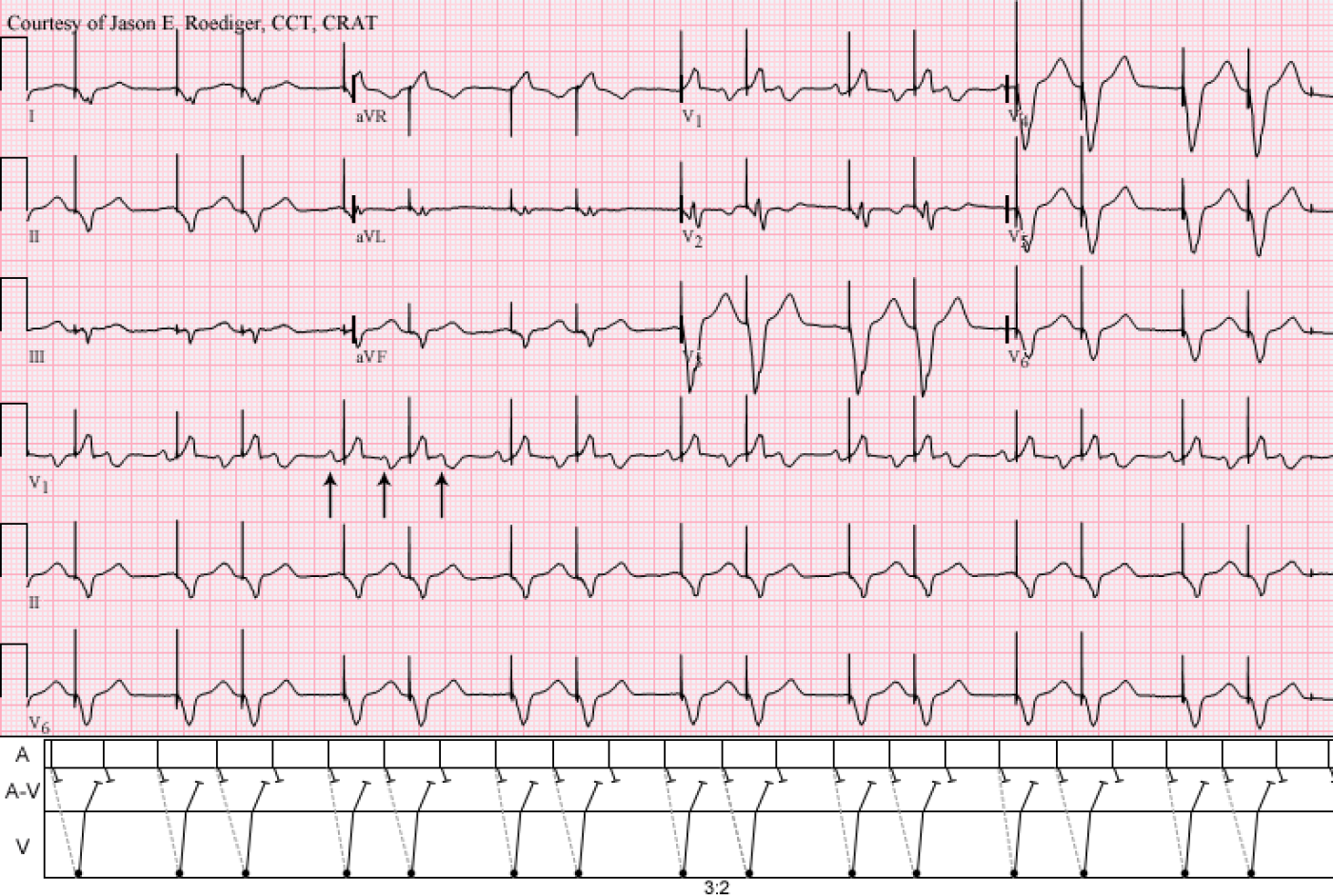Submitted by jer5150 on Sat, 09/01/2012 - 19:44
Patient’s clinical data: 78-year-old white man. History of MI, severe CAD, CHF, LBBB, EF 10-15%, complex ventricular ectopy, SVT, and NSVT.
Questions:
(1.) Based on the patient’s pertinent past medical history as well as the QRS morphology and polarity in lead V1, what kind of implanted device does he have?
(2.) What is the underlying rhythm and which is the best (or only) lead for determining this?
(3.) Is the device behaving normally and functioning properly or is it failing to sense (e.g., oversensing or undersensing)?
(4.) What is causing this bigeminal pattern of paired beats?
Rate this content:
-

- jer5150's blog
- Log in or register to post comments
All our content is FREE & COPYRIGHT FREE for non-commercial use
Please be courteous and leave any watermark or author attribution on content you reproduce.



Comments
Normal behaviour of CRT device [UTR response]
Wow, very nice tracing!!!!
This is a CRT device with pacing from the LV causing R wave in V1, V2 and S negative QRS in I. The underlying rhythm is sinus tachycardia or atrial tachycardia, best seen on V1. After the first P there is paced QRS with short PR followed by P with longer PR and then P in the T wave with block [falling in the PVARP]. This is an upper tracking rate behaviour of the device. This is responsible for the grouped beats. This is completely normal device behaviour. SOLUTION: increase the upper tracking rate, more beta blockers and shorten the PVARP.
Ar first glance
BLK PAC? Medications? lites? V1 rhy give impression type 1 av block? P-rhym
INTERPRETATION
This patient had a Biventricular permanent pacemaker/implantable cardiovertor defibrillatior (BiV PPM/ICD). The underlying rhythm is atrial tachycardia (arrows). This is a precise artificial analogue of Type I A-V block (Wenckebach periodicity). The device is pacing normally and there is no malfunction or failure to sense. The 3:2 Wenckebach behavior accounts for the bigeminal pattern (see laddergram).
Acronyms:
Cardiac resyncronization therapy (CRT)
Post ventricular atrial refractory period (PVARP - pronounced Pee-Varp)
Jason E. Roediger - Certified Cardiographic Technician (CCT)
[email protected]